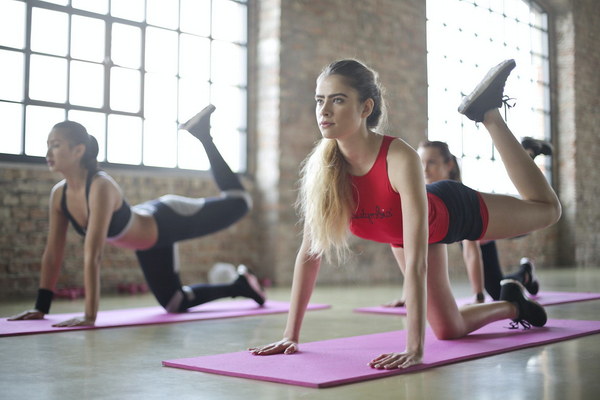Unleashing the Power of Fitness Mastering the Art of Acrobatic Exercises
In the world of fitness, there's a unique breed of enthusiasts who push the boundaries of traditional workouts. These individuals are not just looking to shed pounds or build muscle; they are seeking to master the art of acrobatic exercises. Acrobatic fitness combines the grace and agility of traditional acrobatics with the intensity and discipline of physical fitness. Here's a dive into the exhilarating world of acrobatic exercises and why they are transforming the fitness landscape.
The Evolution of Acrobatic Fitness
Once confined to the realms of theater and sport, acrobatic skills have found a new home in the fitness industry. This evolution is driven by the desire for a full-body workout that challenges both strength and flexibility. Acrobatic exercises are not just for those with a natural knack for flips and twists; they are designed to be accessible to anyone willing to embrace the challenge.
Why Acrobatic Exercises Are a Game Changer
1. Total Body Engagement: Unlike many other forms of exercise, acrobatics require the integration of various muscle groups, ensuring a comprehensive workout. From the core to the extremities, every part of your body gets involved, leading to improved muscle tone and definition.

2. Enhanced Flexibility: The unique movements involved in acrobatic exercises promote increased flexibility. This is crucial for preventing injuries and enhancing performance in other sports or physical activities.
3. Improved Balance and Coordination: Acrobatic workouts demand precise balance and coordination. By training these skills, participants develop a greater sense of body awareness and can apply these improvements to everyday tasks.
4. Core Strengthening: The core is the foundation of any acrobatic routine. Exercises like the planche, handstand, and front lever require strong abs and back muscles, leading to improved posture and core stability.
5. Enhanced Cognitive Function: The complexity of acrobatic movements challenges the brain, leading to improved cognitive function. This can translate to better problem-solving skills and a sharper mind.
Getting Started with Acrobatic Exercises
If you're intrigued by the prospect of adding acrobatic exercises to your fitness routine, here's how to get started:
1. Learn from the Pros: Enroll in an acrobatic fitness class or find a coach who can teach you the basics. This will help you develop proper form and prevent injuries.
2. Gradual Progression: Acrobatic exercises can be challenging, so start with simpler moves and gradually progress to more complex ones. Rome wasn't built in a day, and neither will your acrobatic skills.
3. Practice Regularly: Like any other skill, regular practice is key to improvement. Dedicate time each day or week to work on your acrobatic exercises.
4. Stay Safe: Always warm up before attempting any acrobatic moves. Use mats or soft surfaces to cushion falls and consult with a healthcare professional before starting a new workout regimen.
The Community and Culture of Acrobatic Fitness
One of the most appealing aspects of acrobatic fitness is the tight-knit community that surrounds it. Like any niche sport, there's a sense of camaraderie among participants, from beginners to seasoned pros. Social media platforms and online forums are filled with tips, tricks, and inspiration for those looking to master the art of acrobatic exercises.
Conclusion
Acrobatic fitness is more than just a workout; it's a way of life that encourages pushing your limits and embracing the thrill of new challenges. By incorporating acrobatic exercises into your fitness routine, you'll not only transform your body but also your mindset. So, why not leap into the world of acrobatic fitness and start your journey towards extraordinary strength and agility?









